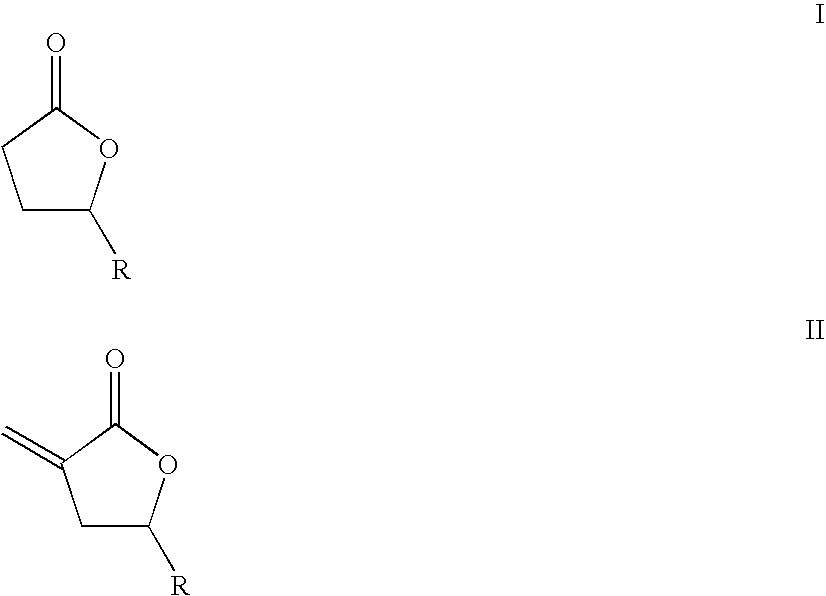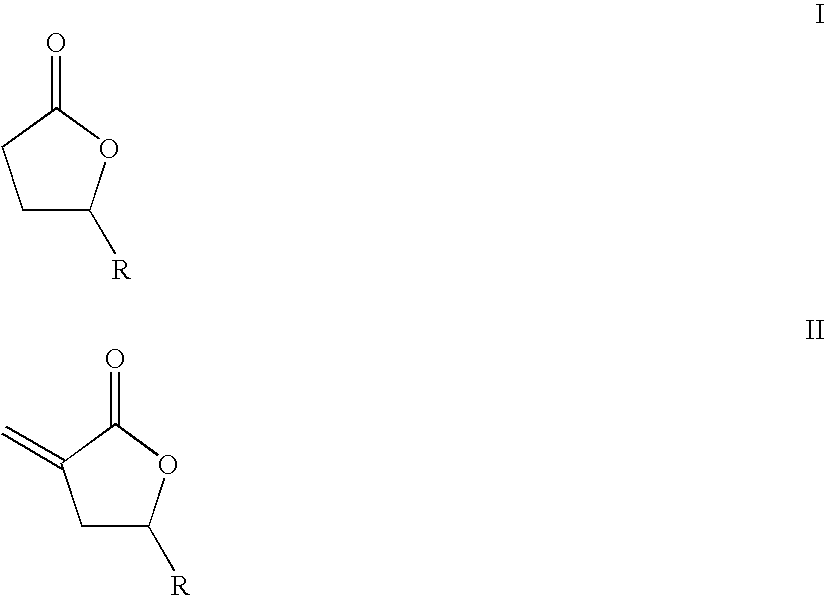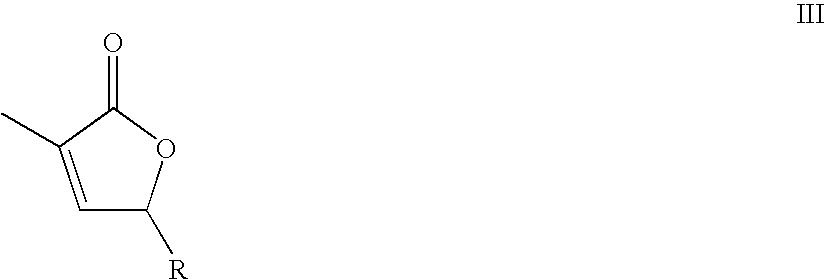Supercritical fluid phase synthesis of methylene lactones using novel grafted catalyst
a technology of methylene lactone and supercritical fluid, which is applied in the direction of bulk chemical production, organic chemistry, etc., can solve the problems of significant decrease in the conversion of starting lactone to alpha-methylene product unattractive current way of making alpha-methylene-gamma-butyrolactone monomer, undesirable decrease in etc., to achieve high initial activity and high level of activity with time on stream
- Summary
- Abstract
- Description
- Claims
- Application Information
AI Technical Summary
Benefits of technology
Problems solved by technology
Method used
Image
Examples
example 1
[0087] The reactor was charged with 0.60 g of an Al-grafted 20% Rb / Davicat Si 1415 catalyst (Catalyst 1). The reactant feed solution consisted of 50.9 wt % GVL, 2.6 wt % diphenyl ether as an internal standard, and the balance was made up with the ethanol hemiacetal solution. This solution resulted in a 1.2:1 ratio of formaldehyde to GVL in the reactor feed, which was metered at a rate resulting in a weight hour space velocity (WHSV) in the reactor of 1.20 g GVL / (g catalyst-h). CO2 was used as the SCF solvent phase, and the flow rate was metered independently to give a final total organic concentration of 4.0 mol % in the reactor feed. The reactor was operated at a temperature of 251° C. and a pressure of about 20.0 MPa. The cumulative turnover number for the reaction was 11.4 mol GVL converted / mol of catalyst, and the corresponding reaction profile showing conversion of GVL to MeMBL is summarized below:
RunGVLMeMBLReactorTimeConversionSelectivityProductivity(h)(%)(%)(g MeMBL / g cata...
example 2
[0088] The reactor was charged with 0.62 g of a Zr-grafted 20% Rb / Davicat Si 1415 catalyst (Catalyst 3). The reactant feed solution consisted of 52.3 wt % GVL, with the balance made up with the ethanol hemiacetal solution. This solution resulted in a 1.2:1 ratio of formaldehyde to GVL in the reactor feed, which was metered at a rate resulting in a weight hour space velocity (WHSV) in the reactor of 1.17 g GVL / (g catalyst-h). CO2 was used as the SCF solvent phase, and the flow rate was metered independently to give a final total organic concentration of 3.9 mol % in the reactor feed. The reactor was operated at a temperature of 245° C. and a pressure of about 23.5 MPa. The cumulative turnover number for the reaction was 17.6 mol GVL converted / mol of catalyst, and the corresponding reaction profile showing conversion of GVL to MeMBL is summarized below:
RunGVLMeMBLReactorTimeConversionSelectivityProductivity(h)(%)(%)(g MeMBL / g catalyst-h)0.5886.797.71.111.1074.398.10.962.1867.498.10....
PUM
 Login to View More
Login to View More Abstract
Description
Claims
Application Information
 Login to View More
Login to View More - R&D
- Intellectual Property
- Life Sciences
- Materials
- Tech Scout
- Unparalleled Data Quality
- Higher Quality Content
- 60% Fewer Hallucinations
Browse by: Latest US Patents, China's latest patents, Technical Efficacy Thesaurus, Application Domain, Technology Topic, Popular Technical Reports.
© 2025 PatSnap. All rights reserved.Legal|Privacy policy|Modern Slavery Act Transparency Statement|Sitemap|About US| Contact US: help@patsnap.com



